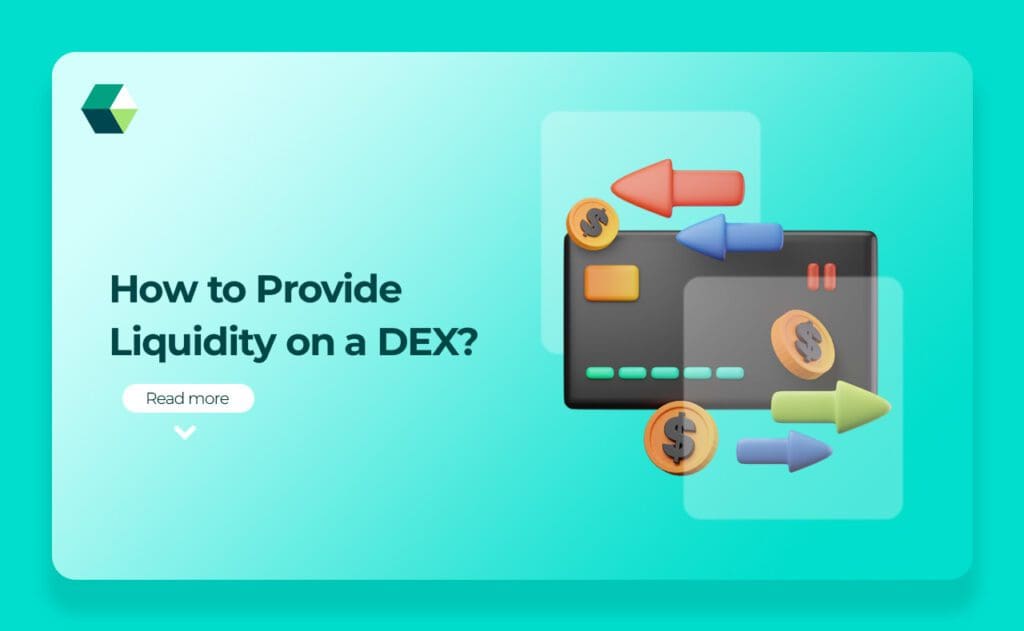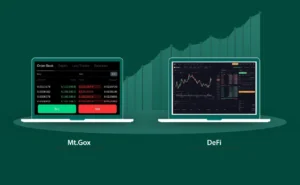
In the world of Decentralized Finance (DeFi), providing liquidity on a decentralized exchange (DEX) is a crucial way to support the ecosystem and earn rewards. As traditional financial systems evolve, DEXs are becoming increasingly popular due to their decentralized nature and enhanced privacy.
What is a Decentralized Exchange (DEX)?
A Decentralized Exchange (DEX) is a platform that allows users to trade Cryptocurrencies directly with one another without the need for an intermediary or central authority. Unlike Centralized Exchanges (CEXs) that rely on a central server to match buy and sell orders, DEXs operate on blockchain technology, enabling peer-to-peer transactions.
What is Liquidity Mining?
Liquidity Mining is a key component of the decentralized finance (DeFi) ecosystem, offering users a way to earn rewards by providing liquidity to decentralized exchanges (DEXs). In liquidity mining, participants deposit their assets into liquidity pools, which are used to facilitate trading on the exchange. In return for their contribution, Liquidity Miners receive rewards, often in the form of additional tokens or transaction fees generated by the pool.
Why Provide Liquidity on a DEX?
Providing liquidity on a decentralized exchange (DEX) is an essential component of the Decentralized Finance (DeFi) ecosystem. By contributing your assets to a Liquidity Pool, you enable the DEX to facilitate trades and maintain market efficiency. In return for providing liquidity, you earn a share of the trading fees generated by the exchange, which can be an attractive incentive.
Additionally, liquidity providers often receive rewards in the form of governance tokens or additional incentives from liquidity mining programs. Liquidity Routing plays a crucial role in optimizing these rewards by ensuring efficient capital allocation across different pools. This can create an opportunity for passive income while supporting the overall health and functionality of the DeFi market.
The Importance of Liquidity
Liquidity is a crucial element in the Financial Markets and decentralized finance (DeFi) ecosystems, refers to the ease with which an asset can be bought or sold without causing significant price fluctuations. High liquidity in a market indicates that there are ample buy and sell orders, which allows for quicker transactions and narrower bid-ask spreads.
DEXs rely on liquidity pools to facilitate trading, and these pools are created by liquidity providers who deposit pairs of assets into them. Adequate liquidity in these pools ensures that traders can execute transactions promptly and at fair prices.
Without sufficient liquidity, DEXs may face issues such as Slippage, where the price of an asset changes unfavorably during a trade, or even the inability to execute trades altogether.
How to Provide Liquidity on a DEX
-
Selecting a DEX
Choosing the right DEX involves evaluating factors such as the user interface, transaction fees, and supported assets. Popular platforms include Uniswap, SushiSwap, and PancakeSwap.
-
Creating a Wallet
To interact with a DEX, you need a Cryptocurrency Wallet. Popular options include MetaMask, Trust Wallet, and Coinbase Wallet. Ensure that your wallet supports the blockchain of the DEX you’re using.
-
Setting Up Your Wallet
Download the wallet app, follow the setup instructions, and securely back up your recovery phrase. Connect your wallet to the DEX by following the platform’s integration steps.
-
Choosing a Liquidity Pool
Liquidity pools consist of pairs of assets, such as ETH/USDT or BTC/ETH. Evaluate pools based on factors such as the assets involved, historical performance, and associated risks.
-
Confirming Your Contribution
Once you’ve added liquidity, your contribution should be reflected in the pool. Monitor your liquidity using the DEX’s dashboard or a third-party analytics tool.
Are There Any Fees Associated With Providing Liquidity?
Yes, there are fees associated with providing liquidity in Decentralized Finance (DeFi) Platforms. When you supply assets to a liquidity pool, you may encounter several types of fees.
Firstly, many decentralized exchanges (DEXs) charge a fee on each transaction executed within their platform. This fee is often a small percentage of the trade amount and is typically split between Liquidity Providers and the platform itself.
Additionally, liquidity providers might face impermanent loss, which is a decrease in the value of their assets compared to holding them outside the pool. While this isn’t a fee per, it’s a potential financial downside.
Some platforms also have additional fees, such as withdrawal fees or staking fees, depending on the specific terms and conditions of the liquidity pool. These fees can vary widely based on the protocol and the specific liquidity pool you participate in.
Can the Genesis Block be Altered?
No, the Genesis Block cannot be altered. It is Hard-Coded into the blockchain software and serves as the foundation of the entire blockchain network. Altering the Genesis Block would require rewriting the entire blockchain from scratch, which is practically impossible due to the immense computational power required. This immutability ensures that the Genesis Block remains a secure and unchangeable reference point for all subsequent blocks in the chain.
Can I Lose Money through Liquidity Mining?
Yes, it is possible to lose money through liquidity mining due to factors such as impermanent loss, Smart Contract vulnerabilities, and market volatility. It’s important to carefully evaluate the risks and rewards before participating and to employ strategies to mitigate potential losses.
How to Monitor Your Liquidity?
-
Track Performance Metrics
Use analytics tools to monitor Key Performance Indicators (KPIs) like total value locked (TVL), liquidity depth, and trading volume.
-
Analyze Pool Utilization
Regularly review the usage rates of your liquidity pools to ensure optimal allocation and detect any inefficiencies.
-
Monitor Price Movements
Keep an eye on price volatility and Impermanent Loss to manage risk and adjust liquidity accordingly.
-
Set Up Alerts
Implement automated alerts for significant changes in liquidity or performance metrics to respond quickly to market shifts.
How Do I Choose the Right DEX for Liquidity Provision?
Choosing the right DEX for liquidity provision is crucial for optimizing returns and ensuring a smooth experience. For a Blockchain Development Company like Nadcab Labs, the selection process involves evaluating several key factors.
Firstly, consider the DEX’s reputation and security. Opt for platforms with a proven track record of secure transactions and audited smart contracts to mitigate risks. Next, assess the DEX’s liquidity and trading volume; higher liquidity typically results in lower slippage and better trading conditions.
Consider the user experience and integration capabilities of the DEX, ensuring it aligns with your technical needs and supports efficient interactions. By focusing on these factors, Nadcab Labs can effectively choose a DEX that maximizes benefits and aligns with its strategic goals in the blockchain ecosystem.







